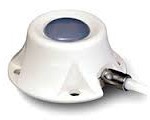
This new publication abstract has been added to our Publications Abstracts resource page.
Carefully selected patients with intractable intracranial hypotension may have improved quality of life with a long-term implanted epidural catheter for infusion of saline. The access port is under the skin, and is accessed with a needle using strict sterile technique for infusion of saline with a portable infusion pump.
A Wearable Epidural Catheter Infusion System for Patients With Intractable Spontaneous Intracranial Hypotension
Schievink WI, Rosner HL, Louy C.
Reg Anesth Pain Med. 2014 Dec 3. [Epub ahead of print]
Abstract
BACKGROUND AND OBJECTIVES:
Spontaneous intracranial hypotension is an important cause of secondary headaches, and most patients respond well to epidural blood patching or direct repair of the underlying spinal cerebrospinal fluid leak. However, options are limited for those patients who have exhausted these traditional treatments, especially when spinal imaging is normal. We describe a wearable epidural catheter infusion system for patients with intractable spontaneous intracranial hypotension.
METHODS:
Six patients with intractable spontaneous intracranial hypotension (4 women and 2 men; mean age, 53 years; mean duration of symptoms, 50 months) underwent placement of a permanent indwelling spinal epidural catheter attached to an external infusion pump. The Migraine Disability Assessment questionnaire was used to assess the severity of the symptoms, before and during treatment.
RESULTS:
The infusion resulted in complete or near-complete symptom relief in 5 of 6 patients (Migraine Disability Assessment score decreased from grade IV to grade I or II). However, the epidural catheter infusion system was removed in 2 patients because of infection, in 1 patient because of delayed failure to provide adequate symptom control, and in 1 patient because of minimal symptom relief. Two patients reported excellent and sustained symptom relief over 27 and 36 months of follow-up.
CONCLUSIONS:
This wearable epidural catheter infusion system showed promising efficacy results but the high rate of complications limits its use to a very select group of patients.
PMID: 25474623

